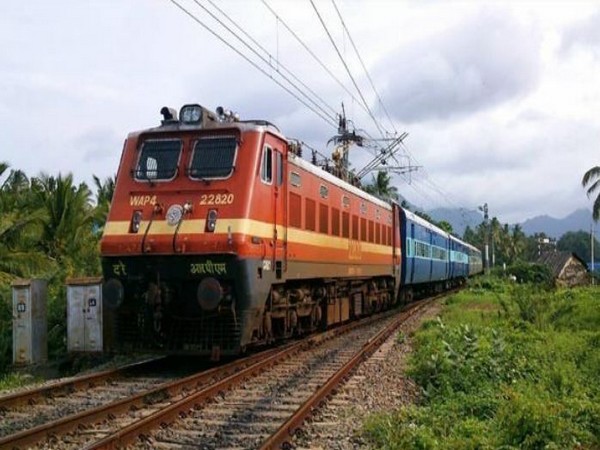
New Delhi: In a development that underscores India's industrial ascent and engineering prowess, the country has officially surpassed traditional locomotive manufacturing giants such as the United States and several European nations to become the world's leading producer of locomotives.
This milestone marks a significant shift in the global industrial landscape, positioning India not just as a consumer of advanced technology but as a formidable producer and exporter in the rail sector.
A historic journey on fast tracks
India’s journey from a modest railway manufacturer to a global locomotive superpower has been nothing short of extraordinary.
Indian Railways, one of the largest rail networks in the world, has long been the backbone of domestic mobility.
However, until recently, much of its infrastructure was reliant on imports or outdated technologies.
The turning point came with a blend of policy reforms, strategic partnerships, and heavy investment in indigenous manufacturing under the "Make in India" initiative launched in 2014.
Over the past decade, the government has aggressively modernised railway production facilities, fostered public-private partnerships, and emphasised electrification and sustainability—all contributing to India’s meteoric rise in this sector.
Numbers that tell the story
According to data from the Ministry of Railways, India produced over 9,000 locomotives in 2024, a staggering increase from just around 2,300 a decade ago.
This figure surpasses production levels in the United States and Germany —countries historically known for locomotive engineering excellence.
The bulk of these locomotives have been electric, aligning with India’s push for cleaner and greener transportation.
India’s locomotive exports have also seen a significant surge, with countries in Africa, Southeast Asia, and even parts of Europe turning to Indian manufacturers for cost-effective and high-quality engines.
From diesel to dual-mode and now state-of-the-art electric locomotives, India is catering to a wide spectrum of global demand.
Technological leap and strategic ties
One of the pivotal factors in India's success story has been its ability to absorb and adapt cutting-edge technology.
Collaborations with global firms like Alstom and GE Transportation have catalysed this transformation.
For instance, the Madhepura Electric Locomotive Factory in Bihar, a joint venture between Indian Railways and Alstom, has been instrumental in producing powerful 12,000 HP electric locomotives, which are among the most advanced in the world.
Similarly, the Diesel Locomotive Factory in Marhowrah, set up in collaboration with GE, is now churning out modern diesel-electric locomotives that meet international standards.
These facilities have not only upgraded India's production capacity but have also created jobs, enhanced local technical skills, and built a robust supply chain network.
The green push: Electrification and sustainability
India’s locomotive manufacturing boom is tightly interwoven with its broader climate goals.
With an ambitious plan to achieve net-zero emissions by 2070, Indian Railways has committed to becoming a fully electrified and carbon-neutral network by 2030.
This green transition has driven massive investments in electric locomotive production, which are not only environmentally friendly but also cost-efficient in the long run.
The government has further introduced incentives for green manufacturing practices.
Locomotive factories are increasingly adopting solar energy, rainwater harvesting, and waste recycling, turning them into models of sustainable industrialisation.
In many ways, India’s locomotive revolution is as much about ecology as it is about economy.
Export boom
What truly underscores India’s leadership is its growing export footprint. Indian locomotives, once considered suitable only for domestic use, are now in demand worldwide.
In recent years, India has exported locomotives to Mozambique, Sri Lanka, Bangladesh, Tanzania, and is now in advanced talks with Egypt, Ukraine, and several Latin American countries.
One of the standout achievements was the 2024 deal with Egypt, where India supplied 200 electric locomotives tailored for desert environments — showcasing the adaptability of its engineering solutions.
These exports not only boost the economy but also reflect growing international trust in India’s manufacturing reliability and technological maturity.
Domestic policy and investment drive
India’s leap in locomotive production would not have been possible without coherent and sustained policy support.
The Production Linked Incentive (PLI) scheme has encouraged private investment in railway manufacturing.
Meanwhile, the liberalised Foreign Direct Investment (FDI) policy in the railway sector has attracted foreign capital and expertise.
Significant budget allocations, such as the ₹2.4 lakh crore (approximately $28.9 billion) earmarked for railways in the 2024 Union Budget, have created a conducive environment for innovation and expansion.
These investments are aimed not just at production but also at modernising rail infrastructure, such as high-speed rail corridors and smart signalling systems, which in turn spur demand for new-generation locomotives.
Beyond tracks and borders
India’s success in locomotive production is more than just a numbers game—it’s a reflection of the country’s evolving identity as a high-tech manufacturing hub.
As India eyes newer frontiers such as hydrogen-powered locomotives, autonomous train operations, and artificial intelligence (AI)-driven maintenance ecosystems, its role in shaping the future of global rail transport is only set to grow.
If the 20th century was defined by Europe’s engineering marvels and America’s industrial scale, the 21st century may well belong to India when it comes to locomotive innovation.
What began as a national priority has now turned into a global opportunity —proving that when policy, purpose, and performance align, even age-old industries can be reinvented.
India is not just running trains anymore—it’s steering the direction of glo